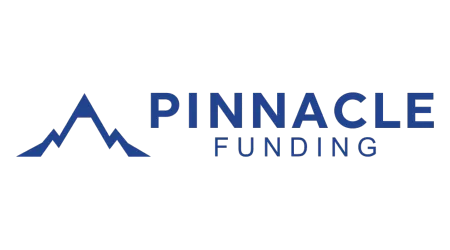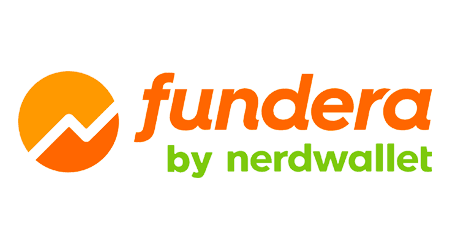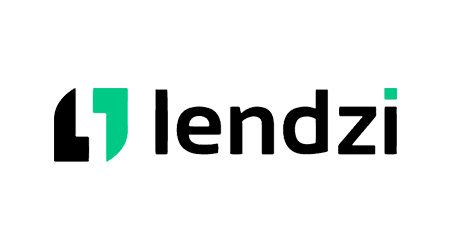Must read
The Small Business Administration (SBA) loan program offers low-interest loans that can help business owners cover startup costs, real estate, working capital and more. Partnered banks and online lenders fund the loans, and they are partially backed by the government. Accessibility is a major advantage, with lower down payments and more flexible terms than most business loans. However, the long application process and strict eligibility criteria may be too limiting for some.
What is an SBA loan?
An SBA loan is a small business loan backed by the government. If your business can’t repay the loan, the government will cover 50% to 90% of the cost, depending on which type of SBA loan you get. This makes it easier for small businesses to qualify for funding.
The SBA also sets caps on loan amounts, interest, fees, requirements and terms, making it a low-cost option for small businesses. Here are some key details of SBA loans:
- Loan amounts: Up to $5.5 million
- Loan terms: Up to 25 years
- Interest rates: Prime rate plus up to 6.5%*
- Guarantee fee: 0% to 3.75%
- Turnaround time: 30 to 90 days
*The prime rate from the Federal Reserve is 7.25% as of September 2025.
SBA loan fees waived for manufacturers? Watch our video to learn more:
How do SBA loans work?
SBA loans operate through a unique partnership between you, a lender and the government. Approved lenders, such as banks and credit unions, provide the capital, and the government guarantees the majority of the loan.
Here’s how it works:
- Application: As the business owner, you submit loan applications to participating lenders, which assess your eligibility and creditworthiness. The lenders must follow the SBA’s guidelines but can also use additional underwriting criteria.
- Government Guarantee: The SBA guarantees up to 90% of the loan, depending on which loan type you get, reducing the lender’s risk. This guarantee allows lenders to work with higher-risk businesses that might not qualify for traditional loans.
- Loan Approval: If the lender approves the application, it requests the government’s guarantee. The SBA reviews the application and issues a Loan Guarantee Agreement if approved.
- Funding: The lender releases the funds to you once all contracts are signed and finalized.
- Repayment: You repay the loan to the lender depending on your terms. If you cannot pay, the lender can request reimbursement from the SBA up to the total guaranteed amount.
Compare SBA loans
The Small Business Administration (SBA) loan program is one of the most popular types of business financing — and for good reason. Thanks to government backing, it offers some of the lowest rates. But, the long application and strict eligibility requirements make them difficult to get.
Compare other products
We currently don't have that product, but here are others to consider:
How we picked theseWhat is the Finder Score?
The Finder Score crunches 12+ types of business loans across 35+ lenders. It takes into account the product's interest rate, fees and features, as well as the type of loan eg investor, variable, fixed rate - this gives you a simple score out of 10.
To provide a Score, we compare like-for-like loans. So if you're comparing the best business loans for startups loans, you can see how each business loan stacks up against other business loans with the same borrower type, rate type and repayment type.
What’s an SBA guarantee?
An SBA guarantee is the government’s legal promise to cover part of the loan if your business defaults. Generally, the SBA guarantees between 75% and 85% of SBA loans, depending on the program and how much you borrow — though with some SBA loans it can guarantee up to 90%. Business owners with over 20% stake in the company must back the rest of the loan with a personal guarantee or collateral.
| Total loan amount | Guaranteed amount | Loan term | Guarantee fee |
|---|---|---|---|
| $150,000 or less | $127,500 or less | 12 months+ | 2% of guaranteed amount |
| $150,001 to $700,000 | $112,500.75 to $525,000 | 12 months+ | 3% of guaranteed amount |
| $700,001 to $5 million | $525,000.75 to $3.75 million | 12 months+ | 3.5% for the first guaranteed $1 million, 3.75% for all guaranteed portions over $1 million |
| Short term loans | Varies | Less than 12 months | 0.25% of guaranteed amount |
What is an SBA guarantee fee?
The SBA guarantee fee is a percentage of the SBA-guaranteed portion of your business loan. Technically, the SBA charges lenders an SBA guarantee fee in exchange for partly backing your loan. However, lenders typically pass this cost on to the borrower. How much the fee costs depends on two main factors:
- Loan amount. Generally, the larger your loan, the larger the percentage you’ll pay for the guarantee.
- Loan term. Similarly, the longer you take to repay your loan, the larger the guarantee fee.
You can usually roll the guarantee fee into your loan’s total cost, so you don’t have to pay it up front.
SBA guarantee fees are not tax-deductible — at least not on federal taxes. While you can normally deduct fees associated with taking out a loan, like an origination fee, this does not apply to SBA guarantee fees. That’s because the guarantee fee is meant to shift the cost of an SBA loan from the taxpayers to the businesses that rely on government-backed funds.
However, some states allow you to claim an SBA guarantee fee as a tax credit. Ask your accountant if this option is available before filing your business’s taxes.
How to qualify for an SBA loan
You can generally qualify for an SBA loan if your business:
- Is for-profit
- Located in the US or its territories
- Operates in an eligible industry
- Meets the SBA’s small business size standards
- Tried and failed to get funding elsewhere
- Have owner equity to invest
- Be creditworthy and show ability to repay the loan
- In some cases provide SBA loan down payment
Additional criteria might apply depending on the program and lender.
How much can I borrow with an SBA loan?
You may be able to borrow amounts from $500 to $5.5 million — it all depends on the type of SBA loan.
How much you qualify for also depends on your personal and business credit scores, annual revenue, available collateral and your business’s current debts.
Quickly compare SBA loan programs
There are multiple SBA loans. Compare loan amounts, uses and rates side-by-side to help narrow down the one you need for your business.
| SBA loan type | Maximum loan amount | Rates | Uses | SBA guarantee fee |
|---|---|---|---|---|
| SBA 7(a) loans | $5 million | Up to 11% | Working capital, refinancing debt, equipment, fixtures, renovations, inventory, starting a business, buying land or buildings, construction, expansion. | 0.25% to 3.75% |
| SBA Express loans | $500,000 | For loans under $50,000: Prime rate + 6.5% For loans over $50,000: Prime rate + 4.5% | Working capital, refinancing debt, equipment, fixtures, renovations, inventory, starting a business, buying land or buildings, construction, expansion. | Up to 3% |
| SBA 504 loans | $5.5 million | CDC portion: Typically 3% to 4% Bank portion: 11% | Real estate and equipment. | 0.5% |
| SBA CAPLine | $5 million | Up to 9.5% | Working capital, filling a contract, real estate, construction. | 0.25% to 3.75% |
| SBA microloans | $50,000 | Depends on the lender, but generally 8% to 13% | Working capital, equipment, supplies and other startup costs. | None |
| SBA Community Advantage loans | $350,000 | For $50,000 or less: Prime + 6.5% Greater than $50,000 up to $250,000: Prime + 6% Greater than $250,000 up to $350,000: Prime + 4.5% | Working capital, refinancing debt, equipment, fixtures, renovations, inventory, starting a business, buying land or buildings, construction, expansion. | 0.25% to 3.75% |
| SBA disaster loans | $2 million | 4% to 8% | Covering rebuilding costs after a natural disaster that insurance doesn’t cover, economic loss if an employee is called on active military duty. | None |
| SBA 7(a) Small Loans | $350,000 | Up to 9.5% | Working capital, refinancing debt, equipment, fixtures, renovations, inventory, starting a business, buying land or buildings, construction, expansion | 0.25% to 3.75% |
| SBA International Trade | $5 million | Up to 9.5% | General-use financing for businesses actively involved in international trade or hurt by competition from imports. | 3.5% to 3.75% |
| SBA Export Working Capital Program | $5 million | No SBA rate cap | Short-term working capital for exporters backed by invoices or other business assets. | 3.5% to 3.75% |
What types of SBA loans are available?
Need more information about a specific loan type? Explore the 10 most popular SBA loan programs in detail.
SBA 7(a) loans
- Maximum amount: $5 million
- Maximum interest rate: 11%
- Terms: 5 to 25 years
- Percentage guaranteed: 75% to 85%
- SBA guarantee fee: 0.25% to 3.75%
- Uses: Working capital, refinancing debt, equipment, fixtures, renovations, inventory, starting a business, buying land or buildings, construction, expansion
The SBA 7(a) loan program is by far the most popular. While it’s easier to find lenders that offer them, they’re also more competitive.
The standard 7(a) loan doesn’t have any additional eligibility requirements, though your lender might. You might have to back your loan with collateral, depending on how much you borrow. And you’ll also need to provide a personal guarantee and loan down payment of around 20%.
SBA Express loans
- Maximum amount: $500,000
- Maximum interest rate: For loans under $50,000: prime rate + 6.5%, for loans over $50,000: prime rate + 4.5%
- Terms: 5 to 25 years
- Percentage guaranteed: 90% for loans of $350,000 or less, 75% for loans of more than $350,000
- SBA guarantee fee: Up to 3%
- Uses: Working capital, refinancing debt, equipment, fixtures, renovations, inventory, starting a business, buying land or buildings, construction, expansion.
SBA Express loans are a smaller version of standard 7(a) loans that you can get fast — the SBA takes just 36 hours to decide. It also has less paperwork, making it a better choice for businesses that don’t have months to wait for financing. Use the funds for just about any purpose, including working capital and real estate.
The SBA also offers an Export Express loan of up to $500,000 for small businesses involved in international trade. Rates and terms are the same. However, the SBA guarantees up to 90% of Export Express loans and can process the application as fast as 24 hours.
SBA 504 loans
- Maximum amount: $5.5 million
- Maximum interest rate: Above market rate for 5-year and 10-year loans
- Terms: 10 to 25 years
- Percentage guaranteed: 30% to 40%
- SBA guarantee fee: 0.5%
- Uses: Real estate and equipment
Also known as 504/CDC loans, this program is specifically for businesses looking to expand. It works a little differently than your typical SBA loan because it comes from two lenders: a community development corporation (CDC) and a third-party lender (often a bank).
- CDC loan. Ranges from 30% to 40% of the project and is entirely backed by the SBA.
- Third-party loan. Isn’t backed by the SBA and must be at least 50% of the project cost.
You must apply through a bank or online lender and a certified development company (CDC). It also has additional eligibility requirements and size standards. This program is only open to established businesses, so startups need to look elsewhere.
SBA CAPLine
- Maximum amount: $5 million
- Maximum interest rate: 9.5%
- Terms: 5 to 10 years
- Percentage guaranteed: 75% to 85%
- SBA guarantee fee: 0.25% to 3.75%
- Uses: Working capital, filling a contract, real estate, construction
The SBA CAPLine program offers both revolving and fixed lines of credit to small businesses. It works a lot like a 7(a) loan when it comes to rates, terms and fees.
SBA microloans
- Maximum amount: $50,000
- Maximum interest rate: Varies based on lender; generally 8% to 13%
- Terms: Up to 6 years
- Percentage guaranteed: None
- Guarantee fee: None
- Uses: Working capital, equipment, supplies and other startup costs — except real estate; some lenders also offer debt refinancing
The SBA microloan program is designed to offer funding for people who are looking to start a new business and small businesses looking to grow. It particularly focuses on women, low-income, veteran and minority entrepreneurs.
Unlike other SBA programs, there’s no guarantee. Instead, the SBA lends money to nonprofit lenders at a discounted rate, which they pass on to borrowers. These loans are often found at community development financial institutions (CDFIs) and microlenders.
SBA Community Advantage loans
- Maximum amount: $350,000
- Maximum interest rate: Prime plus 4.5% to 6.5%, depending on the loan size
- Terms: Up to 25 years
- Percentage guaranteed: 75% to 85%
- SBA guarantee fee: 0.25% to 3.75%
- Uses: Working capital, refinancing debt, equipment, fixtures, renovations, inventory, starting a business, buying land or buildings, construction, expansion
The SBA Community Advantage program is a pilot set to either expire or get extended by September 30, 2024. It aims to promote economic growth in underserved areas and markets. Community Advantage lenders tend to overlook factors like poor credit or low revenue as long as your business benefits an underserved area.
These loans are only available through mission-driven lenders like CDCs and CDFIs. To find a lender near you, contact your local SBA office.
SBA disaster loans
- Maximum amount: $2 million
- Maximum interest rate: 4% — or 8% for businesses that can find funding elsewhere
- Terms: Up to 30 years
- Uses: Covering rebuilding costs after a natural disaster that insurance doesn’t cover, economic loss if an employee is called on active military duty.
The SBA disaster loan program is unique in a few ways: It’s the only loan program that the SBA directly funds, and it’s available to both businesses and homeowners. It’s designed to help people recover from a natural disaster like a hurricane or flood and also provides funding for businesses that employ military reservists on active duty. You can apply for a disaster loan through the SBA website.
SBA 7(a) Small Loans
- Maximum amount: $350,000
- Maximum interest rate: 9.5%
- Terms: 5 to 25 years
- Percentage guaranteed: 75% to 85%
- SBA guarantee fee: 0.25% to 3.75%
- Uses: Working capital, refinancing debt, equipment, fixtures, renovations, inventory, starting a business, buying land or buildings, construction, expansion.
The SBA 7(a) small loans program is similar to the larger 7(a) program, but it has a lower maximum amount of $350,000. If you’re aiming for the SBA 7(a) loan to avoid putting up some collateral, just know that for small loans up to $25,000, lenders don’t have to take collateral — but anything higher and the lender must follow collateral procedures.
SBA International Trade
- Maximum amount: $5 million
- Maximum interest rate: 9.5%
- Terms: Up to 25 years
- Percentage guaranteed: 90%
- SBA guarantee fee: 3.5% to 3.75%
- Uses: General-use financing for businesses actively involved in international trade or hurt by competition from imports.
The SBA International Trade is for general-use financing for businesses actively involved in international trade or hurt by competition from imports. The maximum amount is $5 million, and the rate can reach up to 9.5%. However, you can negotiate with the lender for a lower rate.
SBA Export Working Capital Program
- Maximum amount: $5 million
- Maximum interest rate: No SBA rate cap
- Terms: 12 months or less
- Percentage guaranteed: 90%
- SBA guarantee fee: 3.5% to 3.75%
- Uses: Short-term working capital for exporters backed by invoices or other business assets.
The SBA Export Working Capital Program is for businesses that generate export sales but need extra capital. The line of credit lasts 12 months or less and has a typical turnaround time of five to 10 business days. However, there is no maximum rate, unlike other SBA programs — so watch for that.
How to choose the right program
Find the right program for your business by asking yourself the following questions:
- What do I need the loan for? Look for a program that specializes in your funding needs — like a 504 loan for real estate and CAPLines for seasonal working capital.
- How much do I need to borrow? Different programs specialize in different funding amounts. Look for one with a maximum that fits your range.
- How quickly do I need the funds? Small-dollar loan programs often have a faster turnaround.
- How much can my business afford to pay each month? Use our loan calculator to make sure a program’s loan amounts, interest and terms fit your budget. Compare costs to the average business loan interest rate to make sure you’re getting the best deal.
- Can I qualify? Make sure your program doesn’t have any additional requirements that you don’t meet.
- Are you a veteran? The SBA 7(a) and Express programs may offer special benefits for veterans, though you still have other veteran business loan options to consider.
Pros and Cons of SBA loans
Consider the pros and cons of SBA loans to make an informed decision about small business financing.
Pros
- Variety of loan types
- High maximum loan amounts
- Preset maximum for interest rates
- Longer repayment terms
Cons
- Low or poor credit histories typically not accepted
- Can require collateral
- Slow approval process, depending on the loan type
Where can I get an SBA loan?
Generally, you can get an SBA loan from any type of lender. However, you might want to work with a certified or preferred lender, which both offer a more streamlined application process.
- Certified lenders. These lenders have some experience and meet certain SBA standards. The SBA expedites applications by reviewing its credit decision rather than underwriting the loan. For a 7(a) loan, this cuts the underwriting process down to three days instead of the standard five to 10.
- Preferred lenders. These lenders have the most experience working with the SBA and meet even more rigorous standards than certified lenders. They have the authority to underwrite and set eligibility standards without the SBA reviewing the application. For 7(a) loans, the SBA can approve funding as fast as 24 hours.
10 most active SBA lenders
These lenders have approved the highest volume of SBA loans as of March 2025.
| Lender | Approval Count | Approval Amount | Average Loan Size |
|---|---|---|---|
| Live Oak | 1,120 | $1,583,907,700 | $1,414,203 |
| Huntington Bank | 4,847 | $1,193,558,300 | $246,247 |
| Readycap Lending, LLC | 3,229 | $919,472,400 | $284,755 |
| Newtek Bank | 2,083 | $890,510,900 | $427,514 |
| U.S. Bank | 2,264 | $515,134,600 | $227,533 |
| First International Bank of Indiana | 308 | $462,735,700 | $1,502,389 |
| JPMorgan Chase Bank | 1,743 | $451,992,200 | $259,319 |
| Celtic Bank | 854 | $439,175,300 | $514,257 |
| Wells Fargo | 1,409 | $433,701,000 | $307,808 |
| Bank of America | 723 | $431,751,400 | $597,167 |
How does an SBA line of credit work?
An SBA line of credit (LOC) works like most other business LOCs: You get access to a credit limit of up to $5 million, which you can draw from as you need. You repay only what you withdraw, plus interest. The difference is that the SBA backs part of the loan, making it less risky for the lender.
Businesses can apply for a revolving or fixed line of credit. With a revolving LOC, your credit limit renews after your business repays the funds it withdraws, similar to a credit card. So, if your business has a credit limit of $5 million and withdraws and repays $1 million, you’d still have access to the full $5 million until your term is up. With a fixed LOC, your business can access up to $5 million in total funds — it doesn’t renew after you repay the loan.
There are four types of SBA LOCs:
1. Seasonal CAPLines
Seasonal CAPLines are designed to help businesses keep up with seasonal increases in sales. This can include stocking up on inventory before the holiday season, hiring temporary staff to keep up with demand or any other costs that come with an uptick in profits.
The point of a Seasonal CAPLine is to let your business take full advantage of the busiest time of year. You can’t use the funds for working capital expenses during the off-season.
2. Contract CAPLines
Contract CAPLines are designed to help small businesses cover the cost of filling a contract. This can include administrative and overhead costs as long as they’re directly related to a specific contract or group of contracts.
Like with Seasonal CAPLines, your business can’t use a Contract CAPLine to cover general business expenses like working capital or refinancing debt. You also can’t use the funds to cover the costs of filling a contract that isn’t included in your original agreement.
3. Builders CAPLines
Builders CAPLines are designed to cover the cost of building or renovating real estate you intend to resell for a profit. These include supplies, building materials, equipment, labor, utilities, landscaping, building permits and inspection fees. And Builder’s CAPLines can cover one or multiple projects.
If you hire a subcontractor, the credit line can also cover their profits. Plus, you can use up to 20% of the CAPLine to buy land and up to 5% for public improvements — like repaving a sidewalk outside the building. You can’t use the funds to cover any business costs, however.
4. Working Capital CAPLines
Working Capital CAPLines are for businesses that need help covering overhead expenses in the short term — this is the loan you’d apply for if you’re struggling through the off-season. It’s also the only type of CAPLine that you can use to refinance debt.
Business owners can use the funds to pay for some fixed assets like equipment, though you must refinance that portion of the loan within 90 days.
Not sure where to start? Try a connection service
Connection services can help you find an SBA-preferred lender your business can qualify with if you don’t know where to go first. Some, like SmartBiz, also provide loan packaging services to cut down on even more of the time it takes to apply for a loan.
6 steps to apply for an SBA loan
Follow these steps to apply for an SBA loan:
- Check if you qualify. Make sure you meet all the basic SBA requirements.
- Choose a program. Look for a program that fits your budget and offers the funding you need to cover your costs.
- Compare lenders. Preferred and certified lenders offer the fastest turnaround but compare all options to make sure you find the right fit.
- Compile your paperwork. Coordinate with your lender to figure out what documents you need to provide.
- Complete the application. Fill out the application form that your lender provides.
- Complete additional forms. The SBA requires borrowers to fill out several forms that provide details about personal assets, criminal records and more.
What documents do I need to apply?
Prepare to submit all or some of these documents when you apply for an SBA loan:
- SBA loan forms
- A detailed list of how your business will use the loan
- Financial projections for the next one to three years
- Cashflow statement
- Current profit and loss (P&L) statement
- Current balance sheet
- Two years of business tax returns
- Two years of owner tax returns
- Owner financial statements
- Owner resumes
- Business plan – including an overview and history
- Proof of ownership
- Business licenses and leases
- Business debt schedule
- Information about other businesses you own
What happens if I default on an SBA loan?
There are several steps leading up to a default on an SBA loan, involving both your lender and the government. Depending on the type of SBA loan you get, it covers up to 90% of the amount borrowed if you default, but it’s not as straightforward as it might sound.
Each lender has different procedures it follows when an SBA borrower defaults. Here’s what you might expect to happen.
- The lender sends a notice. You’ll usually receive notice you’re overdue by a letter or phone call. Many lenders work with businesses to prevent default. The default process ends if you reach an agreement with your lender. Otherwise, it progresses to collections.
- The lender seizes collateral. If you backed your loan with collateral, your lender collects that first. If your collateral doesn’t cover the amount owed, your lender could force your business to close and sell off anything of value.
- The lender goes after your assets. Since the SBA requires a personal guarantee from owners with over 20% stake in the company, the lender could come after personal assets next. Typically, it sends a letter to all guarantors asking for repayment, and if they don’t respond, the lender could file a lawsuit.
- The SBA requests an offer in compromise. The SBA pays off your lender, takes over the collections process and typically sends you a letter demanding payment or an offer in compromise (OIC). If a settlement isn’t reached, the SBA turns your case over to the US Treasury Department.
- The US Treasury Department takes over collections. The US Treasury Department can garnish your wages, take away your Social Security and other retirement benefits or withhold your tax refunds until your loan is paid off.
How do I know when my SBA loan is in trouble?
If you’re only a few days late on your loan repayment, you probably don’t need to worry. Typically, lenders have a grace period of 10 to 15 days before charging late payment fees.
However, it’s best to review your loan contract to find out when late fees apply and when it considers your loan in default.
Please share your thoughts:
All responses are collected anonymously and used for internal data purposes only.
What is your primary need for a business loan?
SBA loan alternatives
Not sure you can qualify? Need funding fast? Consider one of these alternatives:
- Bank loans. Banks tend to offer similar rates and loan amounts as an SBA loan. While they often have tough revenue and credit requirements, they aren’t as strict as the SBA.
- Online loans. Online lenders can get you money in a matter of days, often with minimal paperwork. But they tend to come with higher rates.
- Microloans. If you’re looking to finance a startup, it might be easier to qualify for a small-dollar loan with a microlender.
- CDFI loans. CDFIs tend to offer more competitive rates to small businesses that might not otherwise qualify for funding.
- USDA loans. If you’re in agriculture or operate in a rural area, the USDA might offer funding more suited to your needs.
- ERC tax credit. The ERC is a tax credit that goes into your pocket, not a loan that you need to repay. You may qualify for the ERC if you own a small business or tax-exempt organization that continued paying your workers from March 13, 2020, to December 31, 2021.
Bottom line
It’s hard to beat SBA loan rates and terms but make sure you have the time to apply and meet the eligibility requirements.
Get started on your search for an SBA loan by checking out our list of SBA lenders, or research your other options with our guide to business loans.
Frequently asked questions
How hard is it to get an SBA loan?
SBA loans are some of the most difficult types of financing to qualify for. Only 54% of SBA applications were approved in 2017, according to a Federal Reserve survey. This could be because SBA loans consider far more factors than traditional business lenders, including the arrest records of business owners with more than a 20% stake in the company.
Does the SBA still offer PPP loans?
No, the PPP loan ended on May 31, 2021. However, your business can still access low-cost alternatives to PPP loans, like other types of SBA loans, business term loans or lines of credit.
Why is there more paperwork involved with an SBA loan?
There’s more paperwork because SBA loans are from the government and, therefore, sponsored by tax dollars. Extra regulations lead to extra paperwork and qualifications.
Top 10 best business guides
Explore the top business loan guides to help you along your business journey. From information on the best business loans on the market or your best startup loan options to business loans that require little to no paperwork and more.
Sources
Ask a question
Read more on SBA Loans
-
Consider These SBA Loan Alternatives During Government Shutdown
Need capital while SBA lending slows? Discover traditional, online, microloans and more to keep your business funded during the government shutdown.
-
SBA loan down payments are required on three types of SBA loans
A guide to down payment requirements for certain SBA business loans.
-
SBA Loan Calculator for 2025
Estimate monthly payments for that government-backed loan you’ve been eyeing.
-
SBA 7(a) loan application: How to apply in 4 steps
Learn what documents and forms you might need to submit and find out what happens after you apply.





